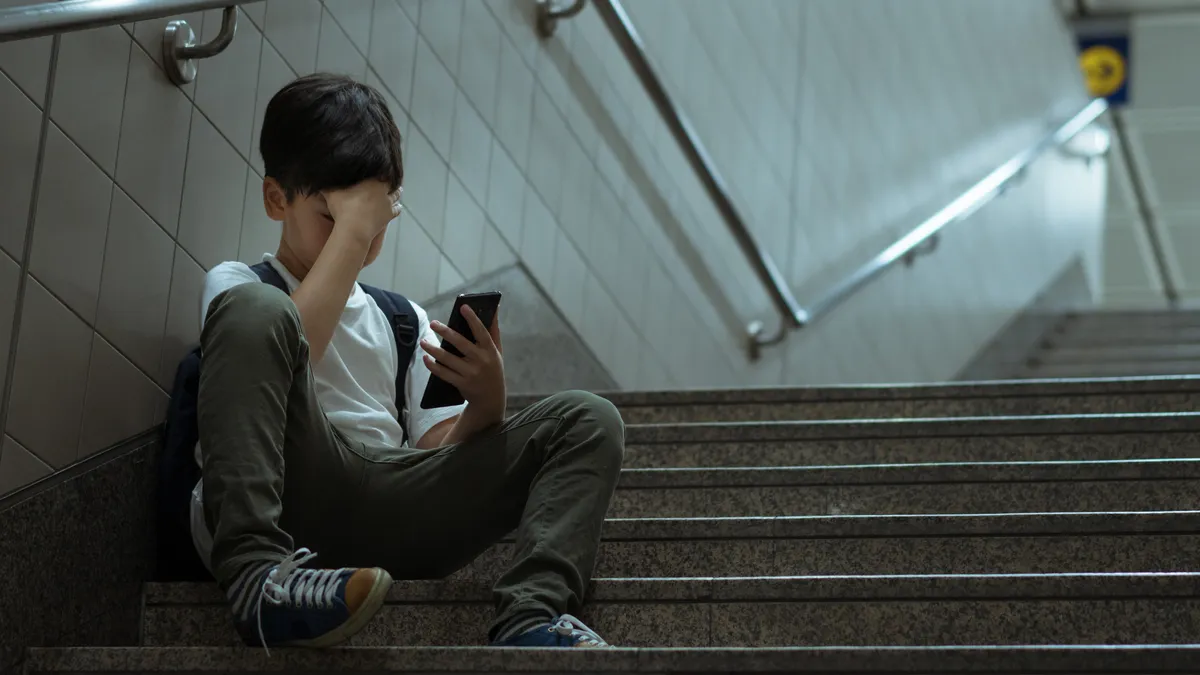Dive Brief:
-
As more school districts and states across the country move to limit or ban cellphone use during school hours, they face an undercurrent of resistance from parents who cite the need for quick communication in emergencies and concerns about discipline measures for those not in compliance.
-
Survey results released Monday from the National Parents Union found that 78% of parents polled want their children to have cellphone access during the school day in case there's an emergency. Some 58% said cellphone access is needed so parents can get in touch with their children and find out where they are, and 48% said contact is needed to coordinate transportation.
-
Many of the cellphone bans aim to improve student mental well-being and academic focus. But a Kaiser Family Foundation paper released earlier this month said research on the effectiveness of cellphone bans is limited and that challenges remain with enforcing bans, accommodating exceptions and ensuring equity.
Dive Insight:
According to the National Parents Union polling, 62% of parents say their children can't use their cellphones during class and academic instruction but are allowed to do so at certain times outside of class. The rest — 38% — say their child's school has a complete ban.
Additionally, only 30% overall say their child’s school solicited parent input on a cellphone policy. However, most parents (71%) generally think their child's school cellphone policy is “about right.”
“When there are emergencies at school, being able to directly communicate with your child to ensure they are safe is critically important and too often schools are dropping the ball on effective communication,” said Keri Rodrigues, president of the National Parents Union, in a statement. “Cell phone bans fail to take into consideration the tragic, real-life scenarios that unfortunately play out all too often in schools."
The National Parents Union poll was based on responses from 1,508 parents of public school students in K-12.
The Sept. 4 mass shooting at Georgia's Apalachee High School, which left four dead and nine injured, reinvigorated the debate on the pros and cons of students having cellphones on school campuses.
According to KFF, seven states — Florida, Indiana, Louisiana, Minnesota, Ohio, South Carolina and Virginia — have passed statewide policies that ban or restrict cellphone use in schools as of Sept. 4. States are taking different approaches with some prohibiting use, while others restrict both use and possession.
Indiana's policy, for instance, prohibits students from using any portable wireless device, including cellphones and laptops, during instructional time unless permitted by teachers and administrators. Virginia's policy directs state officials to collect public opinion regarding cellphones in schools to allow them to create definitions of “cellphone-free education” and to publish model implementation plans and draft policy guidance for school districts.
Several local school systems also have developed policies dictating student cellphone use. The Los Angeles Unified School District is developing a cellphone-free policy that is expected to take effect in January.
New York City Public Schools had a districtwide cellphone ban in schools but reversed that decision in 2015 to allow each school to set its own policies. However, the district is once again debating whether to create a districtwide policy, according to multiple news sources.
Some educators, students and families where cellphone bans have been enacted point to improved academic performance and social engagement. In a survey of 2,889 National Education Association members this spring, 90% support school policies prohibiting cellphone and personal devices during instructional time, and 83% support prohibiting cell phone and personal device use during the entire school day with exceptions for medical or assistive-technology needs.
NEA's position on cellphones states that enforcement of cellphone use should not be left up to individual educators, and schools should avoid relying on policing or other actions that criminalize student behavior.
A Common Sense Media study in 2023 found that 97% of 11- to 17-year-olds used their phones during the school day. The study, based on an analysis of the smartphone data of 200 students, found students who were using their phones during the school day most likely used social media (32%), YouTube (26%) and gaming (17%).
In June, U.S. Surgeon General Dr. Vivek Murthy wrote an opinion piece in The New York Times advocating for social media platforms to post warning labels like those placed on alcohol and cigarette products. On Tuesday, 42 state attorneys general sent a letter to leaders of Congress making that same plea.
"Young people are facing a mental health crisis, which is fueled in large part by social media," the letter said. "As Surgeon General Murthy recognized, this generational harm demands immediate action.”













